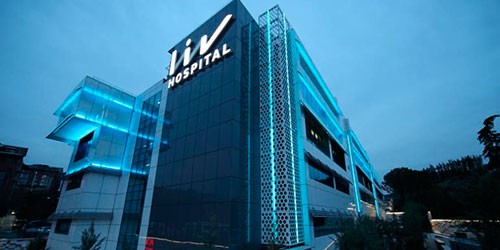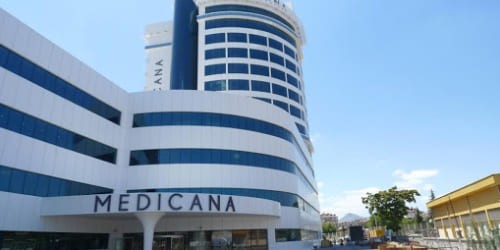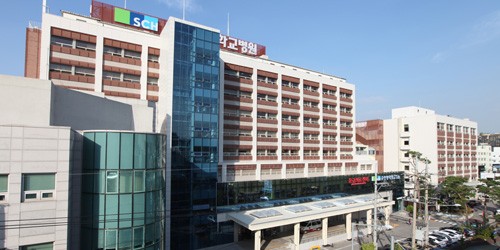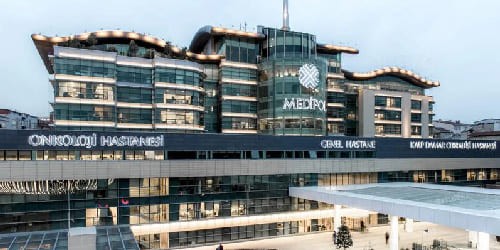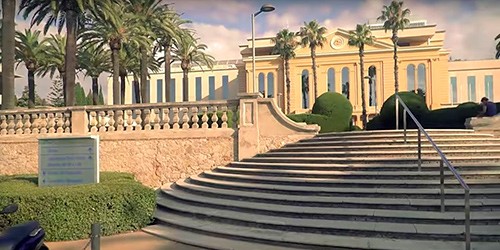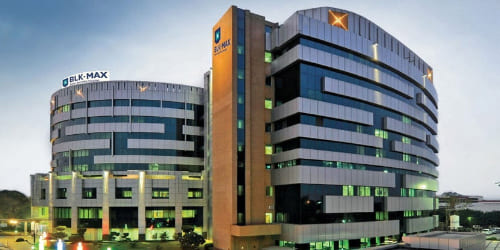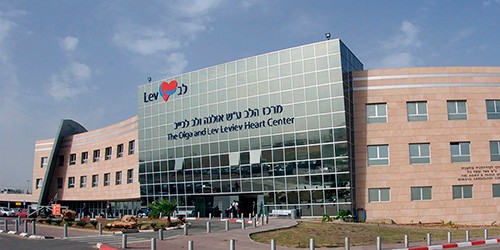Robotic surgery has gained rapid momentum in recent years. It has good prospects in the treatment of pancreatic diseases. An increasing number of medical centres are using robotics for this purpose. This type of treatment can be used for benign and malignant neoplasms. It has demonstrated several advantages over open and laparoscopic techniques. Read more about the use of da Vinci robotic surgery abroad in our article.
Listen to the article:
The Da Vinci robot in pancreatic surgery
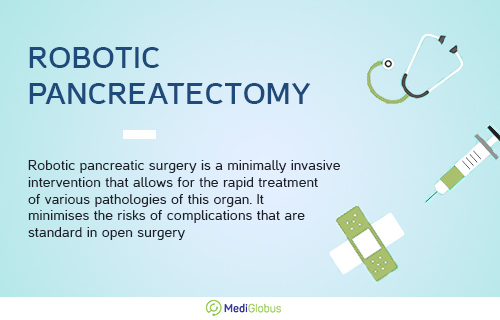
In 2000, the US Food and Drug Administration (FDA) approved the Da Vinci surgical robot for medical purposes. This marked the beginning of the robotic surgical revolution. The first robotic-assisted distal pancreatectomy (RAP) was performed in 2003. Soon after, 13 more surgeries were performed on the pancreas using the da Vinci system. The average duration of the intervention was 270 minutes.
Over the next few years, the robotic approach became popular in countries with advanced medicine. More and more of these procedures began to be performed. They proved to have advantages over laparoscopic and open surgery.
This is because when the Da Vinci robot is used, the surgeon has a bigger range of movement for the removal of abnormal tissue and putting stitches.
This is not possible with laparoscopy, as such surgery uses long, straight instruments that do not bend. Compared to the open approach, robotic pancreatectomy has been shown to reduce complication rates and significantly reduce the postoperative length of stay in the clinic.
Most types of robotic pancreatic surgery are in the early stages of research, but so far it shows that the use of the da Vinci robot is safe and effective. The most studied robotic pancreatic interventions are distal and pancreaticoduodenal pancreatectomy (Whipple’s procedure).
To find out more about how the Da Vinci robot can be used in your specific case, please leave your request on our website. We will do our best to answer your medical questions and organise the trip.
Benefits of robotic pancreatic surgery
Surgery for benign and malignant pancreatic diseases with the Da Vinci has several advantages:
the ability to perform extensive resection of the pancreas and surrounding tissue to achieve optimal survival goals (robotic pancreatectomy is equivalent to open surgery in terms of the short-term oncological outcome as well as recurrence and mortality);
minimal risks of complications (resulting in less blood loss, infection and other adverse effects of surgery);
shortened period of hospitalisation and full recovery;
scarring after resection is practically invisible, and the patient experiences less postoperative pain;
higher probability of preserving the spleen (the organ is saved in 65% of patients, while in laparoscopic surgery the figure is 12%, and in open surgery, it is 29%).
When is the use of the Da Vinci robotic surgery of the pancreas indicated?
The method is used to treat benign and cancerous diseases of the pancreas. It is ideal for tumours located in the tail of the organ, particularly carcinomas. It can also be used for severe forms of acute or chronic pancreatitis, as well as for abscesses and injuries.
The surgeon determines whether or not the patient is suitable for treatment with the Da Vinci robot on an individual basis. Many factors are taken into account, including the results of examinations (e.g. CT scans). The visualisation tests must be taken at least 1-2 months before the operation.
What does robotic pancreatic surgery involve?

Robotic pancreatectomy is performed under general anaesthesia. It usually lasts between 3,5 and 6 hours. The surgeon removes the affected part of the pancreas and some neighbouring tissue in 3-4 punctures of 1-2 cm in size.
During the surgery, the doctor is at the control console of the robotic system. Using a special console, he directs the robotic “tentacle arms” and carefully removes all necessary tissue – usually the body and tail of the pancreas and possibly the spleen.
The doctor then closes the resection sites with sutures or staples. A drain is inserted into the abdominal cavity for the excess fluid. It is removed after a few days. The patient stays in the hospital for about 3-7 days.
Recovery from robotic pancreatic surgery
The rehabilitation period after robotic surgery is usually several times shorter than for traditional open surgery. It lasts approximately 2-4 weeks. However, it is worth bearing in mind that the duration of recovery differs for different types of pancreatic surgery. The greater the extent of the intervention, the longer the rehabilitation time.
After the surgery, the patient will require dip feeding for the first few days. The patient is then given liquid food. As they recover, solid food can be gradually introduced. If the production of digestive enzymes is insufficient, medication is prescribed.
For six months after robotic surgery, regular consultations with the oncologist are necessary to monitor the recovery process and, if there are any complications, correct or alleviate them in time.
Price of the da Vinci surgery for pancreatic diseases
The cost of robotic pancreatic surgery abroad varies according to many criteria. These include the type and severity of the disease, the level of the medical centre, and the qualifications of the doctor. The price is also influenced by the country where the intervention is planned. For example, treatment in Turkish clinics will be 30-40% cheaper than in Western European hospitals with the same level of patient care.
The estimated initial cost of pancreatic surgery performed using the Da Vinci robot abroad is:
| Country | Cost |
|---|---|
| Turkey | from $18,000 |
| Israel | from $29,000 |
| Spain | from €25,000 |
| China | from $16,000 |
| India | from $13,000 |
Where can I have pancreatic surgery with the Da Vinci robot abroad?
Pancreatic surgery is a rather complicated procedure that requires specialists to have sufficient experience. It should therefore be carried out in specialised centres or clinics where such procedures are carried out regularly. Such medical facilities include:
Robotic surgery for pancreatic cancer: a patient’s story
Hospital: Liv Clinic
Procedure: Robotic pancreatic surgeryй
Age: 58 years
From: Kyiv
Igor: “After I was diagnosed with pancreatic cancer, I couldn’t believe it for a long time, but I did start treatment. I was constantly searching on the internet for answers as to whether pancreatic cancer could be cured or whether the entire organ could be removed to get rid of the disease completely. The information I came across was not particularly optimistic. I didn’t want to have open surgery and organ transplantation, as I was not at an advanced stage yet. In my case, pancreatic cancer surgery could be performed robotically. I found specialists who organise treatment abroad and with their help, I was able to go to one of the best clinics in Turkey. I won’t say much about the fact that the level of care here was above reproach. Based on my test results and CT scan, I was an ideal candidate for having the tumour removed by the Da Vinci robot. The surgery was a success. I am now in remission. I hope the cancer does not come back, and I will do my best to keep it that way!”
Summary
Robotic surgery is a minimally invasive intervention used for the treatment of various diseases of the pancreas. It minimises the risks of complications that are standard in open surgery.
The Da Vinci robot is ideal for pancreatic cancer, which is located at the tail end of the organ. It can also be used for cysts and pseudocysts, injuries and pancreatic abscesses.
The surgery is performed under general anaesthesia. It lasts between 3,5 and 6 hours. The patient lies in a supine or lateral position. The doctor operates the robotic arms of the robotic system. He makes 3-4 punctures on the abdominal wall and inserts surgical instruments through them. After gaining access to the affected organ, the surgeon dissects the necessary tissue and closes the incisions.
Robotic pancreatectomy can be performed in Turkish, Spanish, Israeli, Korean and Chinese clinics. These include Medicana, Medipol, Liv, Fuda, BLK, Teknon, Sheba, and SoonChunHyang. The cost of this procedure starts at $13,000.
To have part or all of your pancreas removed abroad, click on the button below and fill in the feedback form. We will help you to choose the best clinic and doctor and assist you with your medical travel arrangements.
Sources:
- Johns Hopkins University
- National Library of Medicine
- National Institutes of Health
- Аssociation of surgical technology




